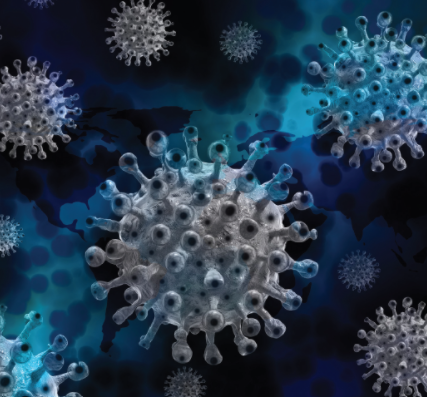
by Tim Sandle
Introduction
The 2020 coronavirus pandemic is of global concern and it is impacting all sectors of the economy. This includes industries that are reliant upon cleanrooms, including the pharmaceutical and healthcare sectors. This article looks into some of the
risk factors relating to cleanrooms, assessing air vector risks as relatively low, as well as the survival of the virus on surfaces (where the risks are greater due to the virus having been recovered after several days from different surface materials). In relation to the higher risk, the article examines the latest research into the most appropriate disinfectants for inactivating the virus on both hands and inanimate objects.
Novel coronavirus
The coronavirus responsible for the 2020 pandemic is named SARS-CoV-2. The virus is a ‘sister clade’ i to the original SARS virus that made headlines in 2003. ‘SARS’ in relation to both viruses stands for ‘severe acute respiratory syndrome-related virus. The disease
caused by the SARS-CoV-2 virus is called COVID-19 (‘CO’ from corona; ‘VI’ for the virus; and ‘D’ for disease; with ‘19’ indicating the year for the first reported case in 2019). 1 The disease primarily affects the upper respiratory tract, causing fever, muscle fatigue and breathing difficulties. From the injection, the mean incubation time is 6.4 days. 2 The viruses are named ‘coronaviruses’ due to the presence of spike-like proteins protruding from the surface, where the proteins have a ‘crown-like' appearance.
The virus infects through the protein spikes binding to a receptor on human cells termed angiotensin-receptor enzyme 2 (or ACE2). The virus membrane then fuses with the cell membrane, enabling the virus to insert genetic material into the cell. The virus spreads primarily via water or mucus droplets, passed from person to person. 3 A secondary means of transmission is on surfaces. Here the virus can survive for several days on plastic and steel (survival is affected by temperature and humidity, with higher temperature and higher relative humidity linked to lower survival rates). /4 A possible, but as yet unsubstantiated, third means of transmission is potentially by lingering aerosols 5 (where the viral RNA could remain stable for a period of time). 6 It should be noted there is not yet reproducible scientific evidence around this vector in relation to SARS-CoV-2 specifically.
Cleanrooms and risk factors
There are two features of note with the coronavirus, which are of relevance to cleanrooms. The first relates to the relative ease of spreading within the indoor environment relative to the outdoor environment (based on initial reports relating to viral infectivity). 7 The second area of risk is the ability of the virus (or at least viral RNA) to survive on surfaces for prolonged periods of time. In addressing air as a vector of transmission first, existing aspects of cleanroom design and personnel garments will help to minimise the risk of viral transmission relative to a non-cleanroom indoor environment. With cleanroom design, HEPA filtered air and far faster air exchange rates compared with non-cleanroom environments will decrease viral transmission. Studies into the first SARS virus indicate that coronaviruses do not pass through H14 HEPA filters, therefore viruses are unlikely to pass into a cleanroom via the external air. 8 9 This leaves other routes being people and transfer of items. With people, faster air exchange rates are designed to remove particles from cleanrooms at a relatively rapid rate (in the context of most cleanrooms having air change rates above 15 air changes per hour, evidence suggests lower transmission of viral infections under conditions of 20 air changes per hour). 10 This will apply to viruses as much as other microscopic inert particles and bacteria, although room dimensions and items within the room will always present unknown variables. To assess viral load from the air, virologists use biosamplers of the appropriate aerosolization efficiency. 11 Further protective measures are provided through cleanroom garments and associated apparel.
You can read more of this article in the CACR, a membership benefit of the CCN. Join by clicking on the box below.




